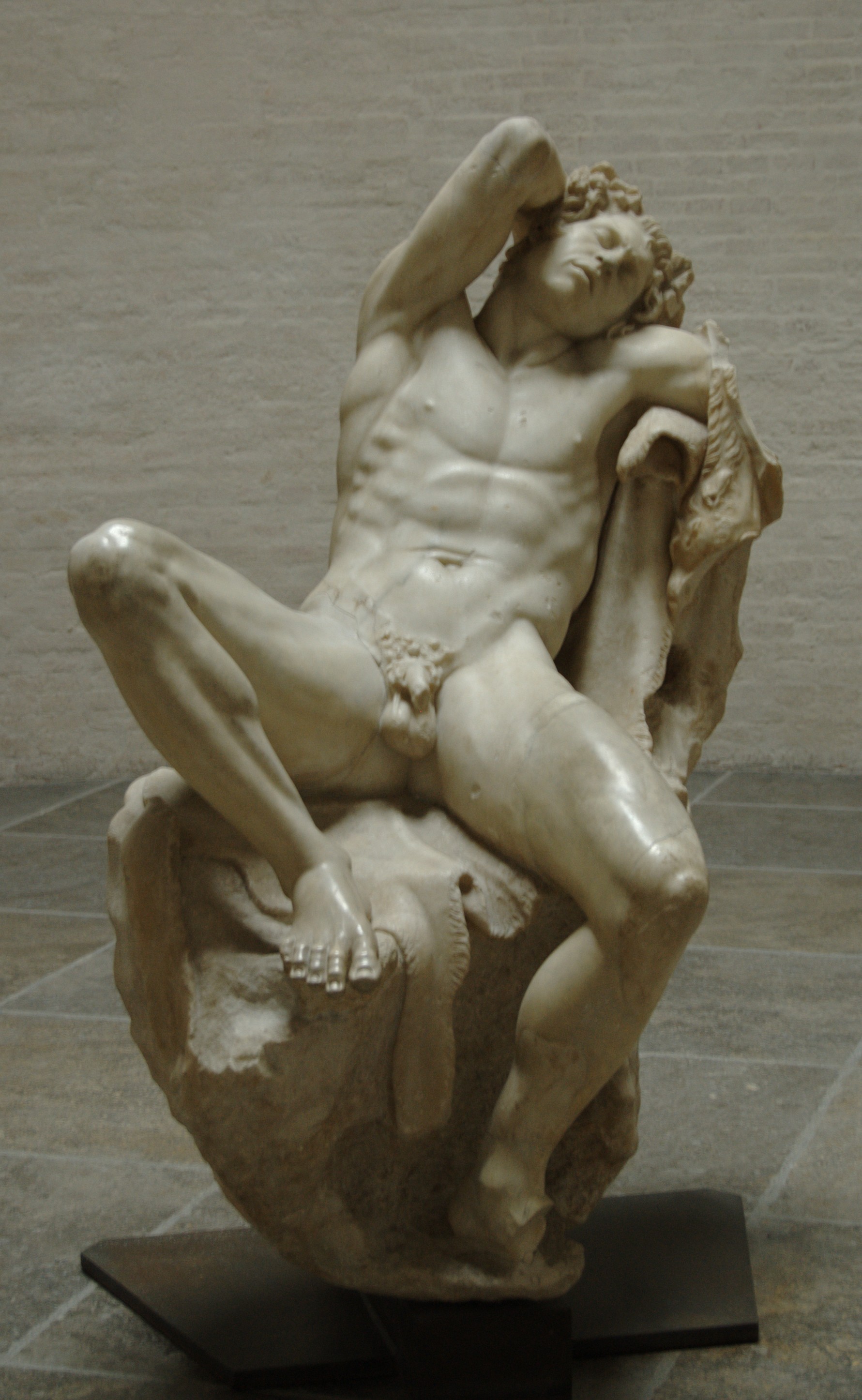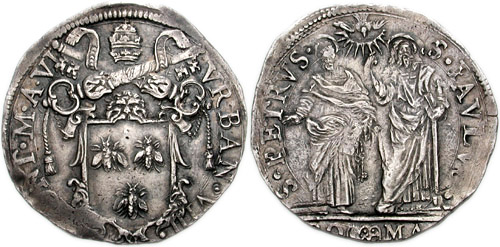|
Giuseppe Giorgetti
Giuseppe Giorgetti (documented 1668–82) was an Italian sculptor in Rome who worked first under his older brother Antonio Giorgetti and took over his workshop after Antonio died in late 1669. He then also became the principal sculptor for the Barberini family for whom he undertook some restoration of ancient sculptures, most importantly of the Barberini Faun in 1679, carried out together with Lorenzo Ottoni. His masterpiece is the recumbent statue of ''Saint Sebastian'' (c. 1671/72) in the Basilica di San Sebastiano fuori le mura on the via Appia, Rome, possibly after a design by Ciro Ferri.The statue is sometimes erroneously attributed to his brother. On Antonio and Giuseppe Giorgetti see Jennifer Montagu, in: ''Art Bulletin The College Art Association of America (CAA) is the principal organization in the United States for professionals in the visual arts, from students to art historians to emeritus faculty. Founded in 1911, it "promotes these arts and their understa ... ... [...More Info...] [...Related Items...] OR: [Wikipedia] [Google] [Baidu] |
Barberini Faun Front Glyptothek Munich 218 N2
The House of Barberini are a family of the Italian nobility that rose to prominence in 17th century Rome. Their influence peaked with the election of Cardinal Maffeo Barberini to the papal throne in 1623, as Pope Urban VIII. Their urban palace, the Palazzo Barberini, completed in 1633 by Bernini, today houses Italy's Galleria Nazionale d'Arte Antica (National Gallery of Ancient Art). Early history The Barberini family were originally a family of minor nobility from the Tuscan town of Barberino Val d'Elsa, who settled in Florence during the early part of the 11th century. This cites: * A. von Reumont, ''Geschichte der Stadt Rom'' (Berlin, 1868), iii. b. 611–612, 615, 617, &c. * ''Almanach de Gotha'' (Gotha, 1902). * J. H. Douglas, ''The Principal Noble Families of Rome'' (Rome, 1905). Carlo Barberini (1488–1566) and his brother Antonio Barberini (1494–1559) were successful Florentine grain, wool and textile merchants. In 1530 Antonio participated in the defense of t ... [...More Info...] [...Related Items...] OR: [Wikipedia] [Google] [Baidu] |
Rome Sint Sebastiaan Buiten De Muren Antonio Giorgetti 13-01-2011 12-36-01
, established_title = Founded , established_date = 753 BC , founder = King Romulus (Romulus and Remus, legendary) , image_map = Map of comune of Rome (metropolitan city of Capital Rome, region Lazio, Italy).svg , map_caption = The territory of the ''comune'' (''Roma Capitale'', in red) inside the Metropolitan City of Rome (''Città Metropolitana di Roma'', in yellow). The white spot in the centre is Vatican City. , pushpin_map = Italy#Europe , pushpin_map_caption = Location within Italy##Location within Europe , pushpin_relief = yes , coordinates = , coor_pinpoint = , subdivision_type = List of sovereign states, Country , subdivision_name = Italy , subdivision_type2 = Regions of Italy, Region , subdivision_name2 = Lazio , subdivision_type3 = Metropolitan cities of Italy, Metropolitan city , subdivision_name3 = Metropolitan City of Rome Capital, Rome Capital , government_footnotes= , ... [...More Info...] [...Related Items...] OR: [Wikipedia] [Google] [Baidu] |
Allgemeines Künstlerlexikon
Thieme-Becker is a German biographical dictionary of artists. Thieme-Becker The dictionary was begun under the editorship of Ulrich Thieme (1865–1922) (volumes one to fifteen) and Felix Becker (1864–1928) (volumes one to four). It was completed under the editorship of Frederick Charles Willis (b. 1883) (volumes fourteen and fifteen) and Hans Vollmer (1878–1969) (volumes sixteen to thirty-seven)."The Project: From Thieme-Becker to the Artists’ Database," GmbH.Heinz Ladendorf, "Das Allgemeine Lexikon der bildenden Künstler Thieme-Becker-Vollmer," in Magdalena George (ed.), ''Festschrift Hans Vollmer'' ... [...More Info...] [...Related Items...] OR: [Wikipedia] [Google] [Baidu] |
Rome
, established_title = Founded , established_date = 753 BC , founder = King Romulus (legendary) , image_map = Map of comune of Rome (metropolitan city of Capital Rome, region Lazio, Italy).svg , map_caption = The territory of the ''comune'' (''Roma Capitale'', in red) inside the Metropolitan City of Rome (''Città Metropolitana di Roma'', in yellow). The white spot in the centre is Vatican City. , pushpin_map = Italy#Europe , pushpin_map_caption = Location within Italy##Location within Europe , pushpin_relief = yes , coordinates = , coor_pinpoint = , subdivision_type = Country , subdivision_name = Italy , subdivision_type2 = Region , subdivision_name2 = Lazio , subdivision_type3 = Metropolitan city , subdivision_name3 = Rome Capital , government_footnotes= , government_type = Strong Mayor–Council , leader_title2 = Legislature , leader_name2 = Capitoline Assemb ... [...More Info...] [...Related Items...] OR: [Wikipedia] [Google] [Baidu] |
Antonio Giorgetti
Antonio Giorgetti (1635 – 24 December 1669) was an Italian sculptor. He was born and died in Rome, where he spent his entire career, a disciple of Gian Lorenzo Bernini. His most prominent sculpture is the ''Angel with the Sponge'' on the ''Ponte Sant'Angelo'', where he was working under the direction of Bernini, who provided sketches and in some instances ''bozzetti'' for the angels. For Borromini's Capella Spada in the church of San Girolamo della Carità (1660), Giorgetti provided the two kneeling angels that hold up the jasper draperies that serve as a balustrade to the altar. By January 1660, Giorgetti was sufficiently closely linked to Cardinal Francesco Barberini to be referred to in several Barberini accounts as ''nostro scultore''. Although sometimes attributed to Antonio, the recumbent statue of ''Saint Sebastian'' (c. 1671/72) in the Basilica di San Sebastiano fuori le mura on the via Appia, Rome, is by his younger brother Giuseppe Giorgetti,Jennifer Montagu di ... [...More Info...] [...Related Items...] OR: [Wikipedia] [Google] [Baidu] |
Barberini
The House of Barberini are a family of the Italian nobility that rose to prominence in 17th century Rome. Their influence peaked with the election of Cardinal Maffeo Barberini to the papal throne in 1623, as Pope Urban VIII. Their urban palace, the Palazzo Barberini, completed in 1633 by Bernini, today houses Italy's Galleria Nazionale d'Arte Antica (National Gallery of Ancient Art). Early history The Barberini family were originally a family of minor nobility from the Tuscan town of Barberino Val d'Elsa, who settled in Florence during the early part of the 11th century. This cites: * A. von Reumont, ''Geschichte der Stadt Rom'' (Berlin, 1868), iii. b. 611–612, 615, 617, &c. * ''Almanach de Gotha'' (Gotha, 1902). * J. H. Douglas, ''The Principal Noble Families of Rome'' (Rome, 1905). Carlo Barberini (1488–1566) and his brother Antonio Barberini (1494–1559) were successful Florentine grain, wool and textile merchants. In 1530 Antonio participated in the defense of th ... [...More Info...] [...Related Items...] OR: [Wikipedia] [Google] [Baidu] |
Barberini Faun
The life-size ancient but much restored marble statue known as the ''Barberini Faun'', ''Fauno Barberini'' or ''Drunken Satyr'' is now in the Glyptothek in Munich, Germany. A faun is the Roman equivalent of a Greek satyr. In Greek mythology, satyrs were human-like male woodland spirits with several animal features, often a goat-like tail, hooves, ears, or horns. Satyrs attended Dionysus. History The sculpture was either carved by an unknown Hellenistic sculptor of the Pergamene school, in the late third or early second century BC or is a Roman copy of high quality, though its present form was given it by a series of restorers in Rome, ending with Vincenzo Pacetti. The statue was found in the 1620s in the moat below the Castel Sant'Angelo, Rome, which in Antiquity had been Hadrian’s Mausoleum. Work on the fortification was undertaken by the Barberini Pope Urban VIII in 1624. The sculpture made its first documented appearance in a receipt for its restoration, 6 June 1628, when it ... [...More Info...] [...Related Items...] OR: [Wikipedia] [Google] [Baidu] |
Lorenzo Ottoni
Lorenzo Ottoni, also known as Lorenzo Ottone or Lorenzone, (1658–1736) was an Italian sculptor who was commissioned by the papacy and various noble houses of Renaissance Italy. Life Ottoni was born in Rome in 1658 and spent the majority of his life in the city. He trained at the famous studio of Ercole Ferrata and later opened his own studio which counted Bernardino Cametti among its students. His large number of assistants meant he was also able to complete commissions outside Rome. He is best known for his Baroque religious sculptures of the Counter-Reformation renovation of Rome. He also created sculptural portraits of high-ranking church officials of his time. Ottoni benefitted greatly from his Catholic contemporaries; enthusiastic patrons of the arts. Ottoni received many commissions from the powerful Barberini family during the 1670s and 1680s. These include marble sculptural portraits of Cardinal Francesco Barberini, Cardinal Antonio Barberini and their nephew Maff ... [...More Info...] [...Related Items...] OR: [Wikipedia] [Google] [Baidu] |
San Sebastiano Fuori Le Mura
San Sebastiano fuori le mura (Saint Sebastian beyond the Walls), or San Sebastiano ''ad Catacumbas'' (Saint Sebastian at the Catacombs), is a Minor basilica in Rome, Central Italy. Up to the Great Jubilee of 2000, San Sebastiano was one of the Seven Pilgrim Churches of Rome, and many pilgrims still favor the traditional list (not least perhaps because of the Catacombs, and because the Santuario della Madonna del Divino Amore, which replaced it in the list, is farther from the inner city). History Built originally in the first half of the 4th century, the basilica is dedicated to St. Sebastian, a popular Roman martyr of the 3rd century. The name ''ad catacumbas'' refers to the catacombs of St Sebastian, over which the church was built, while "fuori le mura" refers to the fact that the church is built outside the Aurelian Walls, and is used to differentiate the basilica from the church of San Sebastiano al Palatino on the Palatine Hill. According to the founding tradition, in 25 ... [...More Info...] [...Related Items...] OR: [Wikipedia] [Google] [Baidu] |
Via Appia
The Appian Way (Latin and Italian: ''Via Appia'') is one of the earliest and strategically most important Roman roads of the ancient republic. It connected Rome to Brindisi, in southeast Italy. Its importance is indicated by its common name, recorded by Statius, of ("the Appian Way, the queen of the long roads"). The road is named after Appius Claudius Caecus, the Roman censor who began and completed the first section as a military road to the south in 312 BC"Appian Way" in ''Chambers's Encyclopædia''. London: George Newnes, 1961, Vol. 1, p. 490. during the Samnite Wars. Origins The need for roads The Appian Way was a Roman road used as a main route for military supplies for its conquest of southern Italy in 312 BC and for improvements in communication. The Appian Way was the first long road built specifically to transport troops outside the smaller region of greater Rome (this was essential to the Romans). The few roads outside the early city were Etruscan and went mai ... [...More Info...] [...Related Items...] OR: [Wikipedia] [Google] [Baidu] |
Ciro Ferri
Ciro Ferri (1634 – 13 September 1689) was an Italian Baroque sculptor and painter, the chief pupil and successor of Pietro da Cortona. He was born in Rome, where he began working under Cortona and with a team of artists in the extensive fresco decorations of the Quirinal Palace (1656–59). He collaborated with Cortona and completed for him the extensive frescoed ceilings and other internal decorations begun in the Pitti Palace, Florence (1659–65). His independent masterpiece is considered an extensive series of scriptural frescoes in the church of Basilica di Santa Maria Maggiore (Bergamo). Also well known is his an altarpiece of ''St Ambrose Healing the Sick'' in the church of Sant'Ambrogio della Massima in Rome. In 1670, he began the painting of the cupola of Sant'Agnese in Agone in central Rome, in a style recalling of Lanfranco's work in the dome of Sant'Andrea della Valle; but died before it was completed in 1693 by his successor Sebastiano Corbellini. He executed ... [...More Info...] [...Related Items...] OR: [Wikipedia] [Google] [Baidu] |



